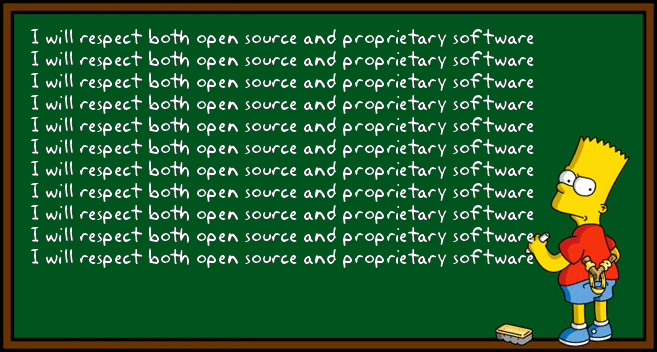Let us know what type of content you'd like to see more of. Fill out our three question survey.
Open Source Series Part 1: What is Open Source?
This post is one of a series of posts on Open Source.
Jul 26, 2017
Here at DAI we rely on software applications and data systems for our everyday work. From internal chat applications, to business intelligence software, to online data collection platforms, technology systems enable us to do our work more efficiently and effectively. But when working on international development projects, we must consider other factors such as access to desktop versus mobile devices, computer processing power and storage, levels of technical acumen, and maybe most importantly, cost.
When faced with issues of licensing or a tight budget, open source tools have a key advantage over proprietary applications, and that’s purchase cost. While here at DAI we can afford the latest software applications, not all organizations are. In these cases, it is not uncommon to turn to open source technologies.

What We Will Cover in this Series
In this series, we will do our best to provide insight into open source software applications and data sets that may be useful for development projects and organizations. In each post, we will cover a topic or tool, provide an overview of how the tool can be used for development projects, discuss strengths and weaknesses of the application compared to proprietary applications, and provide recommendations on ways to learn the technology.
Part 1: What is Open Source?
Before we dig into specific software or data collection initiatives, we thought we’d start by defining open source. The following criteria are set forth by the Open Source Initiative. For further reading we encourage you to visit their website.
- Free Redistribution
- Available Source Code
- Derived Works
- Integrity of the Author’s Source Code
- No Discrimination Against Persons or Groups
- No Discrimination Against Fields of Endeavor
- Distribution of License
- License Must Not Be Specific to a Product
- License Must Not Restrict Other Software
- License Must be Technology-Neutral
The Hidden Costs of Open Source
While open source software is by definition “free,” that doesn’t mean there is no cost. Software requires staff who know how to set up and run it. This can mean hiring staff with technical expertise, or providing training for current staff. And while some learners have the time and technical background to read through software documentation, good education may require paying for classroom or online training.
Open source software is often predicated on users to contribute source code at no cost, or for users to donate money. This can mean delays in updates, or occasional downtime if you accidentally update the operating system on your phone, and an application hasn’t been updated to run. Users are required to be more involved in the software, which can be both an advantage and a drawback.
Open source software may not have a help desk to call. But what it does have is often a community of interested users online, working together on a collective professional development effort.
What’s next?
In our next post we will discuss the GIS application QGIS. This is a personal favorite of mine, so keep an eye out for it!